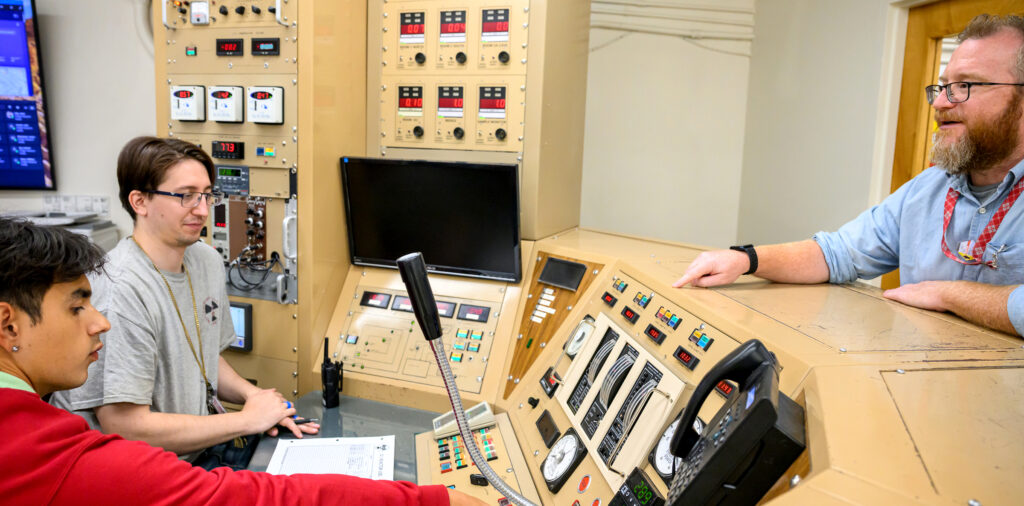Construction will soon begin on a major expansion of one of Washington State University's priority initiatives - the scientific and educational opportunities arising from the state's only nuclear research reactor.
A new 5,000-square-foot facility is being built at the Nuclear Science Center, where a 1-megawatt reactor core has fueled research projects across disciplines, forged partnerships with government agencies and private companies, and trained scores of reactor operators and nuclear scientists for 64 years. The new facility will house three "hot cells" for nuclear research, a chemistry wet lab, and other facilities.
"With the expansion, we're now going to be able to use the full nuclear capacity of the core," said Corey Hines, director of the center.
Kim Christen, WSU vice president for research, said, "These hot cells will supercharge the ability of WSU scientists and our regional and national partners to discover new kinds of fuels, produce specialized isotopes, and develop materials suited to extreme environments, like next-generation nuclear reactors."
In addition to the new research it will enable, a key part of that capacity's promise is providing more students with the firsthand training that is a hallmark of the center, as the need grows to bolster the nation's nuclear workforce.
"There are just not enough of us out there with nuclear experience," Hines said. "And every day we're getting older."
Construction on the $7.6 million building, funded by a congressionally directed spending request supported by Sen. Patty Murray, is expected to take a year. But there are further phases to the project; it will take up to five years before the hot cells are in operation.

The reactor core represents an incredibly versatile resource. It is one of just four research nuclear reactors in the Pacific Northwest; it is a TRIGA facility - Training, Research, Isotopes, General Atomics - that uses fuel especially suited for research. Through fission, it produces excess neutrons used to make radioisotopes and conduct experiments, with specializations in nuclear and radiochemistry, X-ray investigation and probing of materials, and nuclear materials research.
The core is operated from a control room, where student operators in training adjust the power of the reactor by raising and lowering materials that act as sponges to control the nuclear chain reaction.
At any given time, some 15 experiments are under way, as materials are irradiated and then studied. The experiments are conducted by researchers from across WSU, as well as government and private partners. The center also produces radioactive isotopes for use at U.S. national laboratories, for advanced nuclear and energy industry partners and medical research.
"These new capabilities will allow nuclear science research at WSU to move in directions that will benefit not just our state and region, but the nation as a whole," Christen added.
At any given time, some 15 experiments are under way, as materials are irradiated and then studied. The experiments are conducted by researchers from across WSU, as well as government and private partners.
A particular priority is national security work contributing to nuclear science, nuclear non-proliferation and emergency readiness exercises and training programs, Hines said.
"If you go to a big NFL game and there's a high degree of safety, we know part of that safety is due to at the work at the Nuclear Science Center and Washington State University," Hines said.
Since the center's establishment in 1961, 113 nuclear reactor operators trained there have been licensed by the U.S. Nuclear Regulatory Commission. Students with nuclear training also work in many other capacities where that experience is valuable.
"We take students from all disciplines," Hines said. "We do not say you have to be a science major to take the course. Some of the reactor operators have been English majors or history majors, who go on to careers in the nuclear field."
With the addition of hot-cell facilities, the range of research and educational opportunities will grow. Hot cells are "very heavily shielded scientific workspaces," Hines said - enclosed units with thick carbon steel walls and a small, thick window through which operators can observe as they use robotic manipulators to conduct experiments.
Hines is also looking to expand the range of classes at the center, with five new nuclear science courses approved recently and the hope for a nuclear science minor in the future.
Through it all, Hines said, the center will retain its focus on safety. The facility operates with several layers of safety checks and precautions, and encourages a culture with several channels for anyone to report safety concerns, for any reason at any time.
"We strive every day to be the safest building on campus," he said.






